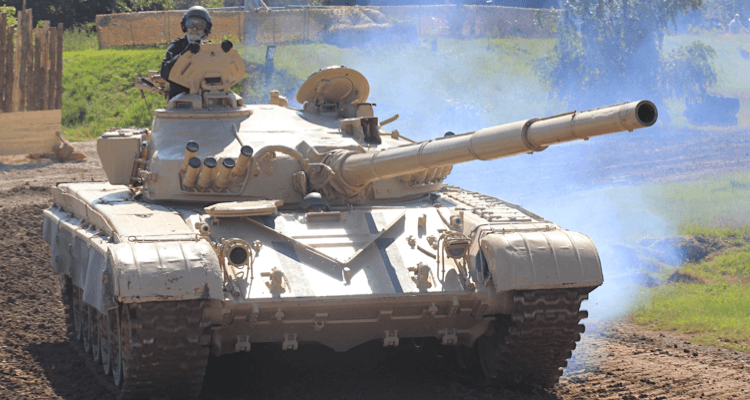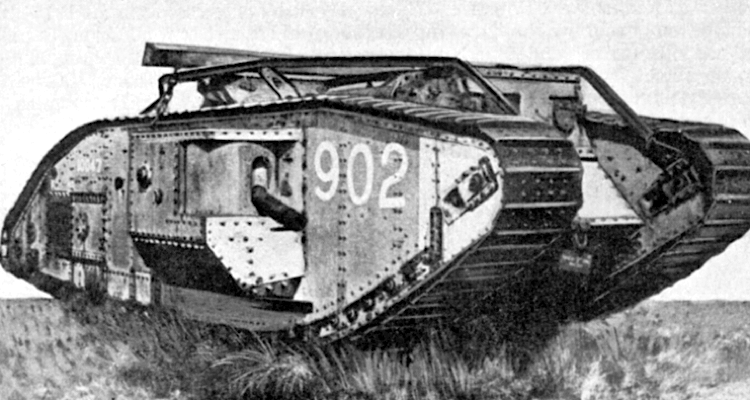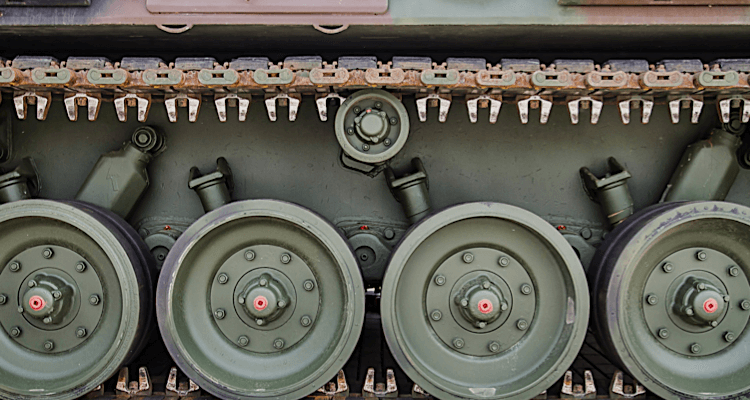
‘Can a tank…’ – all your questions about tanks answered!
Tank Driving is one of our most popular gift experiences at Into The Blue and you often have questions about what tanks can do.
Previously in this blog we asked ‘Can you drive a tank on the road?‘. Surprisingly, the answer to that is yes, it is completely legal in the UK! Since then we’ve notice that the Internet keeps being asked more odd questions about tank driving. So keep reading to find out more about what tanks can and can’t do!
Tanks are characterised by the combination of heavy armour, strong firepower. With those metal tracks instead of wheels, tanks have that ‘go anywhere’ ability. Essentially, they are designed to keep troops protected and to remain effective in adverse conditions on a battlefield, but there are lots of things you wanted to know about tanks:
Your tank driving questions
Can tanks drive on mud?
Yes. Tanks were developed in the First World War by the British Military to drive across the mud and trenches of the battlefield. Years of static warfare meant troops on both the German and Allied sides found themselves literally bogged down in mud.
Inspired by tracked farming vehicles from the early 1900s, the British Army came up with a heavily armed and protected ‘crawler’ vehicle to conquer the rugged terrain. Originally meant to be called landships, the secret codename of ‘tank’ became so well-known that it stuck.
When first introduced on the battlefield, German troops were terrified of the new mechanical monsters and Britain had its first ‘wonder weapon.’
Can tanks drive on sand?
Yes. Thanks to their two metal-belted continuous tracks, the heavy weight of a tank is spread evenly along its full length to avoid sinking in sand.
Perhaps the most famous demonstration of this came in the Second World War and the fight for North Africa. The allies finally defeated Nazi General Erwin Rommel and his Afrika Korps after winning huge tank battles across the desert sands. Just be sure to fit good air filters to stop sand getting into your engine…
Can tanks drive through houses and buildings?
Yes, but it’s not a great idea. If you’re a fan of Top Gear, then you may well have seen Jeremy Clarkson, Richard Hammond and James May destroying houses with military vehicles. You may also recall it’s not as quick or easy as you might think, as tanks are not specifically designed for demolition.
Military veterans say that driving through buildings in a combat is unlikely, because it slows you down and debris could easily jam your tracks. Tanks travelling slowly, or stationary, are highly vulnerable to attack. So nor is it ideal to crash into reinforced concrete walls, or risk accidentally getting stuck in a basement, for obvious reasons.
Can tanks drive through trees?
Yes, but once again it’s not advisable. While tanks can easily cope with small, young trees, anything larger will definitely slow you down.
If a tank uproots bigger trees, you risk damaging the tank (and turret in particular) as they fall down. There is also the possibility of getting stuck without traction on top of tree trunks, which can actually lift tracks off the ground!
Even driving through hedgerows should be avoided, as it can be surprisingly dense and may hide metal or concrete objects, which could immobilise a tank. In any case, woodland provides ideal cover and hiding places for tanks, so all the more reason to not knock down trees!
Can tanks drive on snow and ice?
Yes. As with mud and sand, tracks spread the weight of a vehicle over a much greater surface area than wheels, so only very deep snow will stop a tank.
Even ice doesn’t present any particular problems for a tank, especially if the metal tracks are fitted with rubber pads to give extra grip.
Incredibly, the explorer Scott of the Antarctic took specially designed tracked vehicles along on his ill-fated 1912 expedition to the South Pole.
Can tanks drive in water?
Yes, modern tanks are designed for ‘deep fording’ . That means they can drive through water for a short period of time, for example to cross a river where a bridge has been destroyed.
Can tanks drive on water?
Yes! Almost unbelievably, as part of the D-Day landings in June 1944, some American Sherman tanks were modified to drive on water.
While tanks are clearly heavy vehicles relative to their size, they were made to float using canvas screens and driven by two small boat-type propellers. Sadly, many of these ‘swimming tanks’ sank in the rough seas, but others did reach the beaches of France to help the Allied push-back against the Nazis. Amazing but true!

Can I drive a tank?
Yes! No need to be in the military to have the chance to drive a fully-tracked military tank. From Spartan and Scorpion tanks, to FV432 APCs and Chieftains we’ve got them all for you to drive e at venues around the UK. Wherever you go, you’ll have a great time – so long as you avoid buildings, tall trees and don’t get into deep water!


